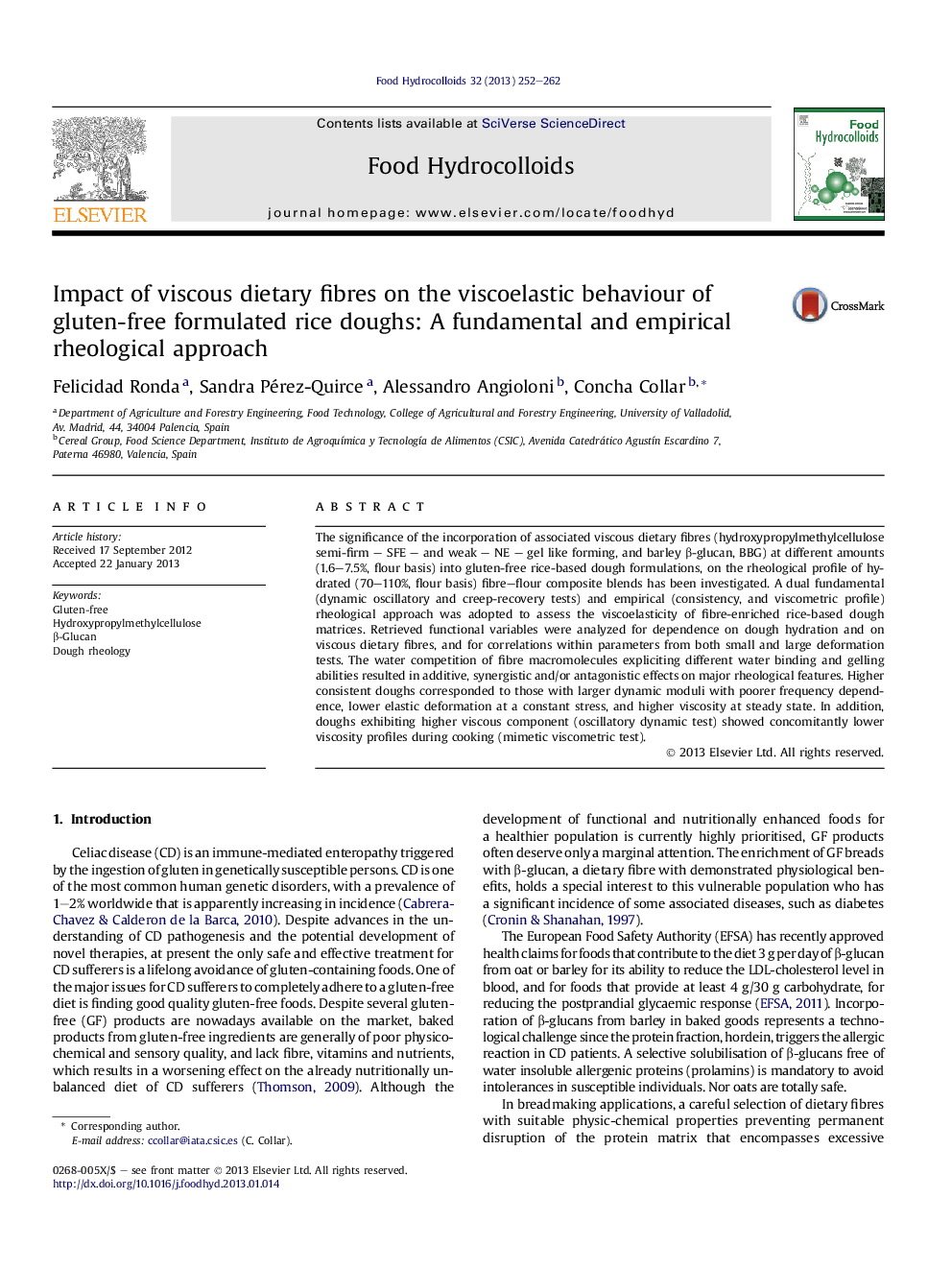| کد مقاله | کد نشریه | سال انتشار | مقاله انگلیسی | نسخه تمام متن |
|---|---|---|---|---|
| 603968 | 880279 | 2013 | 11 صفحه PDF | دانلود رایگان |

The significance of the incorporation of associated viscous dietary fibres (hydroxypropylmethylcellulose semi-firm – SFE – and weak – NE – gel like forming, and barley β-glucan, BBG) at different amounts (1.6–7.5%, flour basis) into gluten-free rice-based dough formulations, on the rheological profile of hydrated (70–110%, flour basis) fibre–flour composite blends has been investigated. A dual fundamental (dynamic oscillatory and creep-recovery tests) and empirical (consistency, and viscometric profile) rheological approach was adopted to assess the viscoelasticity of fibre-enriched rice-based dough matrices. Retrieved functional variables were analyzed for dependence on dough hydration and on viscous dietary fibres, and for correlations within parameters from both small and large deformation tests. The water competition of fibre macromolecules expliciting different water binding and gelling abilities resulted in additive, synergistic and/or antagonistic effects on major rheological features. Higher consistent doughs corresponded to those with larger dynamic moduli with poorer frequency dependence, lower elastic deformation at a constant stress, and higher viscosity at steady state. In addition, doughs exhibiting higher viscous component (oscillatory dynamic test) showed concomitantly lower viscosity profiles during cooking (mimetic viscometric test).
Effect of barley beta-glucan (BBG) addition on creep test curves and pasting profiles of gluten-free doughs at intermediate doses (0 level) of dietary fibres (1.3% SFE; 1.3% NE; 2% BBG) and water (90% WATER) addition.Figure optionsDownload as PowerPoint slideHighlights
► Viscous dietary fibres provide variable effects on viscoelasticity of gluten-free doughs.
► Water competition plays a key role on the viscoelasticity of fibre-enriched gluten-free doughs.
► Higher dynamic viscous modulus in doughs corresponds to lower viscometric profiles during pasting.
Journal: Food Hydrocolloids - Volume 32, Issue 2, August 2013, Pages 252–262